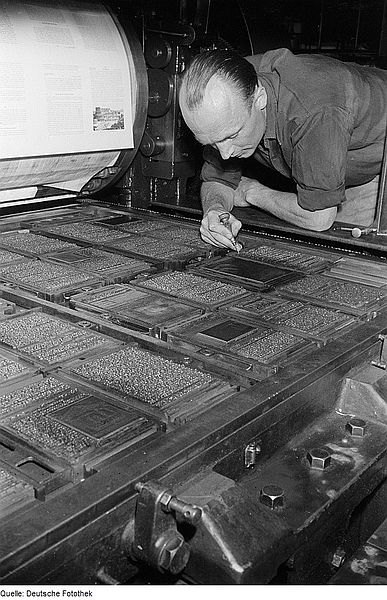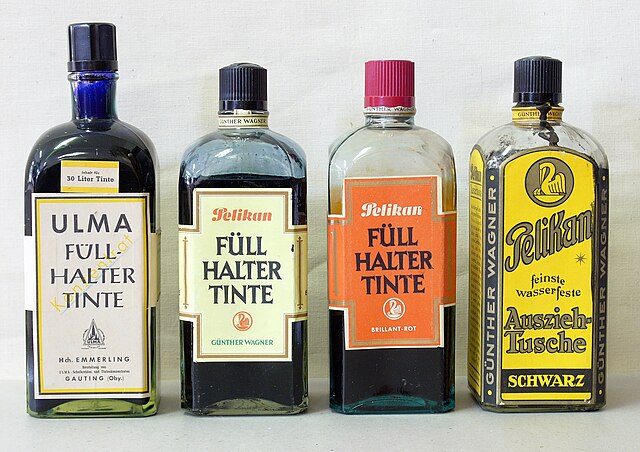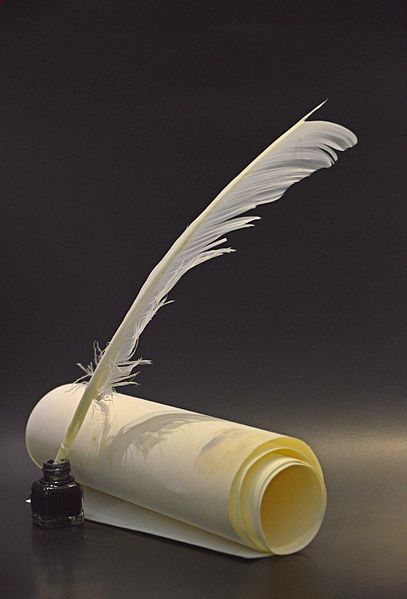Letterpress printing is a technique of relief printing for producing many copies by repeated direct impression of an inked, raised surface against individual sheets of paper or a continuous roll of paper. A worker composes and locks movable type into the "bed" or "chase" of a press, inks it, and presses paper against it to transfer the ink from the type, which creates an impression on the paper.
A printer in Leipzig inspecting a large forme of type on a cylinder press in 1952. Each of the islands of text represents a single page. The darker blocks are images. The whole bed of type is printed on a single sheet of paper, which is then folded and cut to form many individual pages of a book.
Printer operating a Gutenberg-style screw press
1917 press room, using a line shaft power system. At right are several small platen jobbing presses, at left, a cylinder press.
Proof press, 1850
Ink is a gel, sol, or solution that contains at least one colorant, such as a dye or pigment, and is used to color a surface to produce an image, text, or design. Ink is used for drawing or writing with a pen, brush, reed pen, or quill. Thicker inks, in paste form, are used extensively in letterpress and lithographic printing.
Bottles of ink from Germany
Writing ink and a quill
Ink drawing of Ganesha under an umbrella (early 19th century). Ink, called masi, an admixture of several chemical components, has been used in India since at least the 4th century BC. The practice of writing with ink and a sharp pointed needle was common in early South India. Several Jain sutras in India were compiled in ink.
Oak galls and iron(II) sulfate








